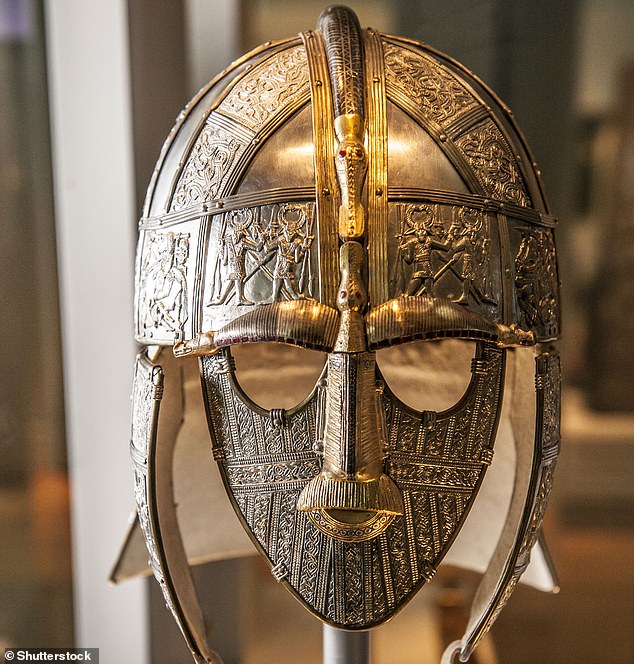
“Sutton Hoo Helmet’s Origin Stuns Archaeologists: New Analysis Debunks Swedish Roots” (12 words, captures surprise, key finding, and overturns prior assumption concisely.)
Sutton Hoo Helmet’s Origins Challenged by Danish Discovery
(Images: Reconstructed helmet at the British Museum; metal stamp found in Taasinge; comparison of designs)
For nearly a century, the Sutton Hoo burial site in Suffolk, England, has captivated historians with its glimpse into early medieval Europe. The star artifact, the Sutton Hoo helmet—a shattered 7th-century relic painstakingly reconstructed—has long been linked to Sweden. However, a recent discovery in Denmark could rewrite this narrative.
A Game-Changing Find
In 2023, Danish metal detectorist Jan Hjort unearthed a small metal stamp (a “patrice”) on the island of Taasinge. This stamp, used to imprint designs onto metal sheets, features a warrior on horseback trampling a fallen foe—a motif strikingly similar to panels on the Sutton Hoo helmet. Researchers at Denmark’s National Museum argue the resemblance is too precise to be coincidental. “They might have been made by the same craftsmen,” suggests curator Peter Pentz.
(Image: Side-by-side comparison of the Taasinge stamp and Sutton Hoo helmet design)
Rethinking Anglo-Saxon Connections
Previously, scholars believed the helmet’s design originated in Sweden’s Uppland region, known for similar warrior imagery. The Taasinge stamp challenges this, hinting at Danish origins. If proven, it could reshape understanding of 7th-century power dynamics, positioning Denmark—not Sweden—as a cultural and political hub influencing England. Pentz speculates Denmark may have been a unified kingdom centuries earlier than thought, with England and Sweden as outposts.
Skepticism and Challenges
Not all experts are convinced. Oxford historian Dr. Helen Gittos notes such motifs were widespread across Europe. “The stamp is intriguing, but the design isn’t unique,” she cautions. Additionally, the helmet’s fragmented state and the stamp’s wear make direct comparisons difficult. The stamp’s small size also raises questions—could it have been transported from elsewhere?
(Image: Fragmented remains of the Sutton Hoo helmet)
The Sutton Hoo Legacy
Discovered in 1939 by amateur archaeologist Basil Brown, Sutton Hoo’s ship burial—dating to 610–635 AD—contained over 260 treasures, likely honoring a East Anglian king, possibly Rædwald. The site, devoid of human remains due to acidic soil, symbolizes the era’s elite connections across Northern Europe.
Why It Matters
If Danish-made, the helmet underscores Denmark’s underestimated influence. Pentz argues it hints at a “power center” predating Viking-era unification by Harald Bluetooth. Yet, as Gittos notes, the shared motifs might simply reflect widespread cultural exchange among medieval elites.
(Image: Map of Sutton Hoo and Taasinge locations)
Conclusion
While the Taasinge stamp fuels debate, it highlights the interconnectedness of early medieval Europe. Whether a Danish origin is confirmed or not, the discovery enriches Sutton Hoo’s mystique—a testament to the enduring allure of history’s unsolved puzzles.
(Image: Artist’s depiction of the Sutton Hoo ship burial)
Word count: ~600


